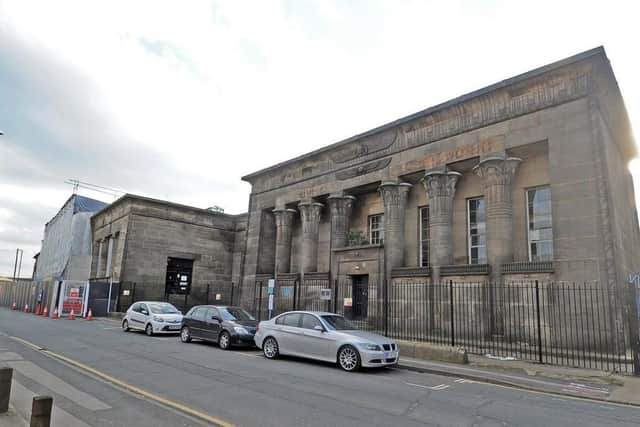Temple Works Leeds £1m investment will help it be British Library site - Historic England's Duncan Wilson
Enormous, distinctive, character-filled places, they are the original northern powerhouses, playing a fundamental role in shaping the culture, economy and fabric of the region.
That’s why I’m delighted that Historic England is investing £1m to help secure the future of the Grade I listed Temple Works in Holbeck. The former flax mill is an integral part of Leeds’s industrial past and embodies the city’s spirit of energy and innovation.
Advertisement
Hide AdAdvertisement
Hide AdConstructed in 1838-40, Temple Works would have been an awe-inspiring sight to Victorian eyes. The vast brick-vaulted, sky-lit, spinning mill was claimed to be the world’s largest room at the time. It also boasted an early hydraulic lift, used to lift sheep onto the roof to graze on grass, an innovation to help maintain humidity and prevent the flax from breaking.


Perhaps the most striking aspect was the mill’s stone columned facade, which was modelled on the Egyptian Temple of Edfu, creating a link between the Yorkshire building and the ancient origins of the flax industry. Yet the grand confidence of Temple Works projected to the world couldn’t protect it from market forces. When the flax industry declined, the mill started to fade. It has been vacant and on the Heritage at Risk register since 2008.
But, after being lost and unloved for years, Temple Works is being nursed back to life by developers CEG. Our funding will support wider repair work on the site, part of an exciting new chapter for the area and the vision of CEG, together with Leeds City Council and the British Library. This £1m investment is a catalyst that will enable ambitious plans to re-develop Temple Works, including the vision of establishing it as a permanent new public space for the British Library in the North.
The story of Temple Works is echoed across West Yorkshire. Once the engines of economic success, which helped to drive the prosperity of the whole nation, former textile mills are now often derelict and abandoned, often seen as eyesores by their communities. Worse still, they can present a fire risk, as recently seen with the blaze at Dalton Mills in Keighley. But with energy, drive and collective action from developers, local authorities and funders, these buildings and sites can be rescued and reborn. They are big challenges to solve and, like Temple Works, need strong partnerships and development funding to realise their potential.
Advertisement
Hide AdAdvertisement
Hide AdDean Clough Mills in Halifax is a fantastic example of transformation. Once home to one of the largest carpet manufacturers in the world, the thriving complex now offers spaces to work, eat, drink, shop and experience a range of cultural activities with a theatre, art gallery and event spaces.
Sunny Bank Mills in Farsley has been at the heart of the local economy for almost two centuries. But where it once produced cloth, it now houses 75 varied small businesses employing 400 staff. Wonderfully, its textile heritage lives on – it recently starred on BBC1’s Great British Sewing Bee.
Mills are an embodiment of what we call ‘‘everyday heritage’’. Our grand castles and stately homes are an important part of our history, but they only tell a part of our story as a nation. For most of us, our heritage isn’t just the castle on the hill, the country house or the cathedral – as important as these places are. It’s the factories and farms where our ancestors worked, the cottages and council houses where they lived, the chapels and churches where they worshipped and the pubs, clubs and shops where they enjoyed themselves. My own family were Yorkshire farmers and engineers based in Leeds, so I feel a strong tie to the heritage of Yorkshire.
These places have shaped our country and our culture. They are integral to our local identity. Leeds and Bradford wouldn’t be the same without their mills and just try to imagine Sheffield without its steel works. At Historic England it’s our job to celebrate this local heritage and help it play a meaningful and relevant role in our daily lives and for future generations.
Advertisement
Hide AdAdvertisement
Hide AdOur heritage doesn’t have to be preserved behind glass to retain its value. It can be built upon, reinterpreted, and used to create something new. An old textile mill can become a home, an office, a theatre – and hopefully in the case of Temple Works, a prestigious new library. But what makes it special and distinct, is that – regardless of its new purpose it will retain some of its own unique character and a sense of our collective past.